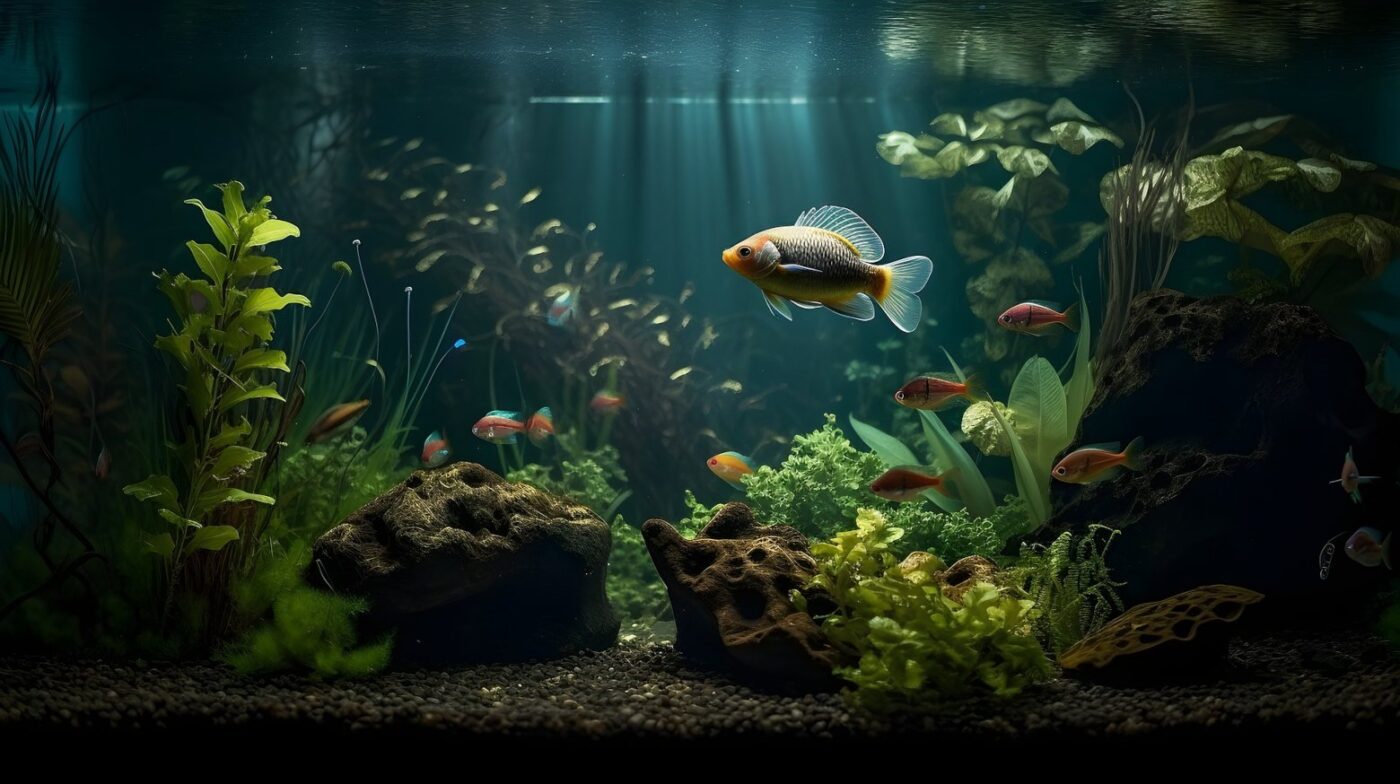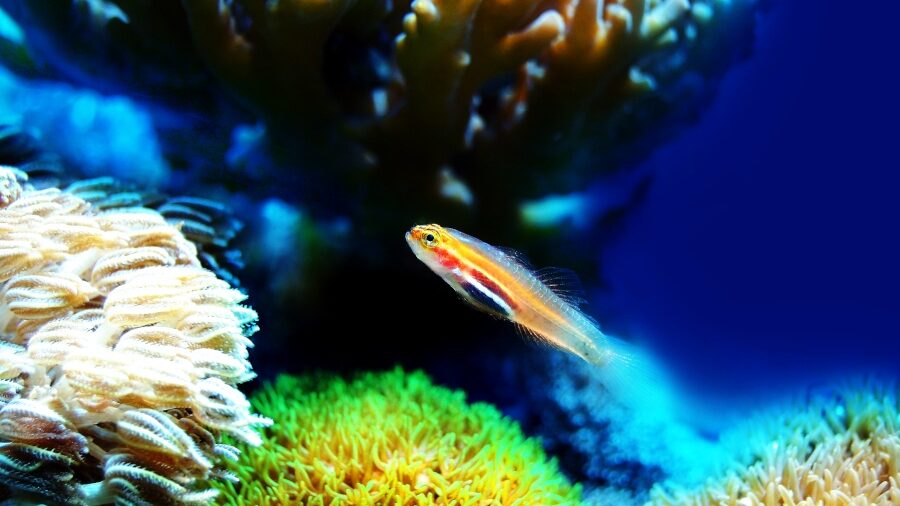Guide
Water change in the aquarium: That’s why you should read on here
Even in the fascinating underwater world of an aquarium, careful care is needed to maintain the natural balance and create an optimal environment for the inhabitants. A crucial aspect of this care is water change – a fundamental measure that ensures the health and well-being of the aquatic community. Regularly renewing the water not only prevents murky conditions, but also balances nutrients and removes harmful substances. In this blog post, we’ll dive into the world of aquariums to understand why aquarium water changes are crucial, how they should be carried out and the benefits they bring to the dazzling microecology of your underwater retreat.

Water change in the aquarium: Why this is so important
Changing the water in your aquarium is invaluable when it comes to ensuring a healthy and balanced ecosystem for your aquatic inhabitants. This crucial maintenance aspect goes far beyond simply improving visibility from murky water. Here are some reasons why regular water changes are of great importance:
- Degradation of harmful substances: Over time, harmful substances such as ammonia, nitrite and nitrate accumulate in the aquarium. These can affect the well-being of your fish and plants and even lead to serious health problems. A water change effectively removes these harmful substances and helps to keep the water quality at an acceptable level.
- Controlling algae growth: Algae can multiply rapidly in an aquarium and have unpleasant consequences for the ecosystem. Excessive algae growth can not only affect aesthetics, but also disrupt the ecological balance and displace oxygen from the water. A water change reduces nutrients that promote algae growth, minimising unwanted algae problems.
- Refreshing minerals and nutrients: Water is not only a solvent, but also a carrier of minerals and nutrients that are essential for plant growth and fish health. A controlled water change makes it possible to introduce fresh and important elements into the aquarium that are consumed over time.
- Improving the oxygen supply: Fresh water contains more oxygen than stagnant water. The change increases the oxygen content in the aquarium, which promotes the well-being of the fish and ensures that they have enough oxygen for their respiration.
- Stabilising the pH value: A pH value that is too high or too low can harm the inhabitants of the aquarium. Regular water changes can help to stabilise the pH value and thus create an optimal environment for plants and fish.
Overall, then, water changes are an indispensable measure for maintaining water quality in the aquarium and creating a healthy, attractive and harmonious underwater biotope. It is important to understand the correct frequency and methodology for water changes to achieve the best possible results.
How often should the water in the aquarium be changed?
The frequency at which water changes should be carried out in the aquarium is a crucial factor that significantly influences the well-being of the aquatic community. However, there is no “one size fits all” answer as various factors need to be considered to determine the ideal interval for water changes.
- Aquarium size: Smaller aquariums can become saturated with pollutants and nutrients more quickly, which may require more frequent water changes. Larger aquariums usually have a greater buffering capacity due to their larger volume of water and may require less frequent changes.
- Stocking density: The more fish, plants and other creatures there are in the aquarium, the more waste products are produced. A higher stocking density can therefore lead to an increased load on the water, which makes more frequent water changes necessary.
- Filtration system: An efficient filtration system can help remove pollutants from the water and maintain water quality for longer. In a well-filtered aquarium, the need for water changes can potentially be reduced.
- Plant growth: Living plants in the aquarium can help absorb pollutants and produce oxygen. A heavily planted aquarium may require less frequent water changes as the plants do some of the cleaning work.
As a general guideline, it is often recommended to replace about ten to 20 percent of the water content about every one to two weeks. This helps to keep the water quality at an acceptable level without disturbing the delicate ecological balance. However, it is important to consider the individual needs of your aquarium. Regular water parameter tests can help you monitor the condition of the water and determine when a water change is necessary.
Ultimately, the frequency of water changes should be determined based on the specific characteristics of your aquarium. A balanced understanding of these factors will ensure that you maintain optimal water quality for the health and well-being of your aquatic inhabitants.

Step-by-step guide
Preparation
- Have materials ready: Make sure you have all the materials you need to hand, including a bucket, hose or siphon, water conditioner (if used) and a thermometer.
- Prepare the water: Prepare the water you will use for the water change in advance. The water should have approximately the same temperature and chemical composition as the water in the aquarium.
- Switching off electrical devices: Switch off all electrical devices in the aquarium, such as the heater, filter and lighting. This minimises the risk of damage during the water change.
Carrying out the water change
- Siphoning the water: Use an aquarium siphon or hose to carefully siphon the old water out of the aquarium. Start at the bottom of the aquarium and slowly work your way up. This will help remove dirt and debris.
- Changing the water: Fill the bucket with the prepared water that you used for the water change. Slowly and carefully pour the new water into the aquarium. This helps to minimise temperature and chemical differences.
- Adding water conditioner: If you use a water conditioner, add the recommended amount to the new water in the bucket before adding it to the aquarium. The water conditioner helps to neutralise any chlorine or chloramine residues in the tap water.
- Monitor the temperature and water level: Make sure that the water temperature of the new water is the same as in the aquarium. Also make sure to keep the water level in the aquarium appropriate.
Closing
- Switch on the devices: After the water change has been completed and the new water is in the aquarium, switch on all electrical devices again.
- Observation of the animals: Monitor your fish and other inhabitants over the next few hours to make sure they do not show any unusual reactions to the water change.
- Disposal of old water: Dispose of the extracted water properly. Avoid simply dumping it into the waste water to minimise the environmental impact.
It is important to note that the exact procedure may vary depending on your individual aquarium and the inhabitants living in it. However, carefully planned and gradual water changes will help maintain water quality and create an optimal living environment for your fish and plants.
Tap water in the aquarium: You should bear this in mind
Using tap water in an aquarium is a common practice to replace or replenish the water in an aquarium. This water, which comes from household taps, is a convenient and inexpensive source, but it requires some important considerations to ensure that it is suitable for the aquatic environment.
Chlorine and chloramines:
Most municipal water suppliers treat tap water with chlorine or chloramine to kill bacteria and germs and improve water quality. Before adding tap water to your aquarium, it is essential to ensure that chlorine and chloramines are neutralised. This can be done by adding a suitable water conditioner that neutralises these chemical compounds and thus protects the health of your fish and plants.
Water hardness and pH value:
The water hardness and pH of tap water can vary depending on the location. Before adding tap water to the aquarium, it is advisable to test the water parameters to ensure they match the requirements of your aquatic inhabitants. Some fish species and plants prefer softer or harder water, and sudden changes in these parameters can be stressful or harmful.
Heavy metals and impurities:
Tap water may contain traces of heavy metals such as copper or lead that come from the pipes. It is important to ensure that the water is free of such contaminants so as not to endanger the health of the aquarium inhabitants. A good quality water conditioner can also help to bind these pollutants and make them harmless.
Temperature adjustment:
The temperature of the tap water may differ from the aquarium temperature. Before adding tap water to the aquarium, it is advisable to adjust it to the correct temperature to avoid abrupt temperature changes that could be stressful for the inhabitants.
Overall, tap water offers a convenient way to replace or replenish aquarium water, but requires careful preparation to ensure it meets the requirements of the aquatic community. Through the use of water conditioners, regular water parameter testing and a mindful approach, tap water can be a suitable option to create an optimal environment for your fish, plants and other creatures.